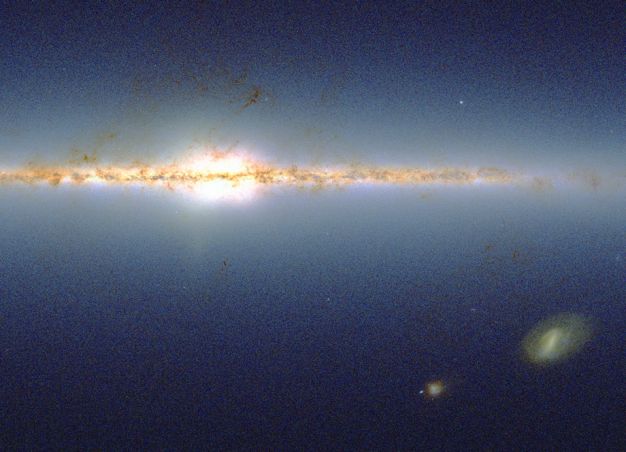Counting Stars in the Infrared Sky

Explanation:
The bulging center of
our Milky Way Galaxy,
dark cosmic clouds, the
thin galactic plane, and even nearby galaxies are easy to spot in this
sky view.
But each pixel in the digital image is actually based on star counts
alone -- as derived from the
Two Micron All Sky Survey
(2MASS) database.
In 2001, the
2MASS project completed a ground-based survey of the
entire sky
and cataloged upwards of 250 million stars.
Their
full all-sky picture
assigns a brightness and color to
individual pixels based on corresponding star counts in each of the
survey's three
near-infrared bands.
In this cropped image, the
star-packed galactic center
is toward the
upper left, with the bright plane of our Galaxy running horizontally
through it.
Dense regions of interstellar
dust clouds, still opaque to penetrating
near-infrared light,
appear dark
by reducing the 2MASS
star counts.
Our fuzzy neighboring galaxies, the large and small
Magellanic Clouds,
are at the lower right, while scattered single bright spots
correspond to the intense concentrations of stars in the Milky Way's
large
globular star clusters.
Authors & editors:
Robert Nemiroff
(MTU) &
Jerry Bonnell
(USRA)
NASA Web Site Statements, Warnings,
and Disclaimers
NASA Official: Jay Norris.
Specific
rights apply.
A service of:
LHEA at
NASA /
GSFC
& Michigan Tech. U.

